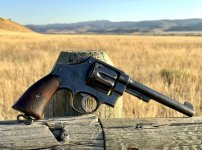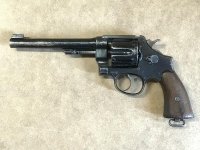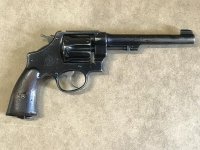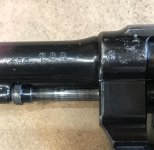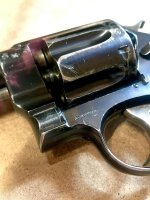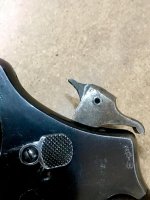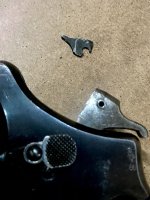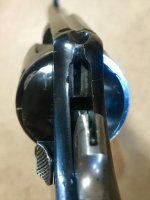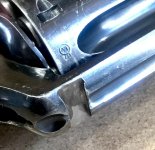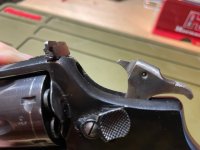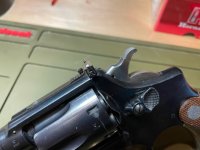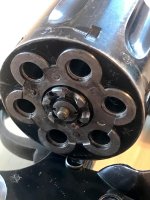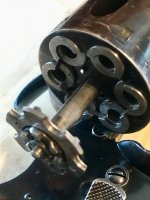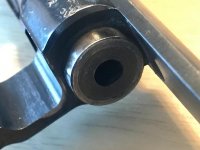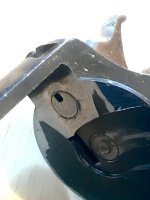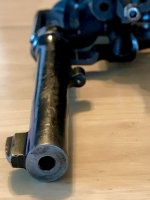Brooklynite
Member
- Joined
- Mar 28, 2014
- Messages
- 111
- Reaction score
- 77
Just picked this up today.
I got it for what I think was a good price, even with it's issues.
It seems to be a British WW1 contract hand ejector that was converted from 455 webley to 22lr after it's service.
The Good:
I love this thing, it was a ton of fun to test fire today.
It loaded, fired, and ejected perfectly for 24 rounds.
It seems unique, I'd never seen or heard of an N-Frame rimfire conversion before.
I got to spend my afternoon at my favorite gun shop and shooting out on public land.
The Bad:
It has a dovetail cut in the top of the frame for a rear sight, but doesn't have a rear sight installed. It also has the front sight cut down.
It has significant finish wear, but I actually like the look of it. Probably lots of stories. (The lighting in some photos look like rust, but isn't)
The Ugly:
After putting 4 cylinders through it I pulled the trigger and got a 'click'. After I pulled back the hammer I saw that the hammer mounted firing pin had broken off where it's pinned in place inside the hammer, or was possibly broken and snapped back into place by it's previous owner… as I was able to snap it back into place myself.
So…
What's the story with this pistol? I'll get some detailed photos of the markings on it tomorrow.
How hard is it to replace the floating hammer mounted firing pins on these older revolvers? Is it something I can do myself, or should I get a pro to do it?
Ditto with the missing rear sight.
Does this thing have any collector value after all the work that's been done on it and all it's scars, or can I do as I please with it guilt-free?


I got it for what I think was a good price, even with it's issues.
It seems to be a British WW1 contract hand ejector that was converted from 455 webley to 22lr after it's service.
The Good:
I love this thing, it was a ton of fun to test fire today.
It loaded, fired, and ejected perfectly for 24 rounds.
It seems unique, I'd never seen or heard of an N-Frame rimfire conversion before.
I got to spend my afternoon at my favorite gun shop and shooting out on public land.
The Bad:
It has a dovetail cut in the top of the frame for a rear sight, but doesn't have a rear sight installed. It also has the front sight cut down.
It has significant finish wear, but I actually like the look of it. Probably lots of stories. (The lighting in some photos look like rust, but isn't)
The Ugly:
After putting 4 cylinders through it I pulled the trigger and got a 'click'. After I pulled back the hammer I saw that the hammer mounted firing pin had broken off where it's pinned in place inside the hammer, or was possibly broken and snapped back into place by it's previous owner… as I was able to snap it back into place myself.
So…
What's the story with this pistol? I'll get some detailed photos of the markings on it tomorrow.
How hard is it to replace the floating hammer mounted firing pins on these older revolvers? Is it something I can do myself, or should I get a pro to do it?
Ditto with the missing rear sight.
Does this thing have any collector value after all the work that's been done on it and all it's scars, or can I do as I please with it guilt-free?
Attachments
Last edited:

